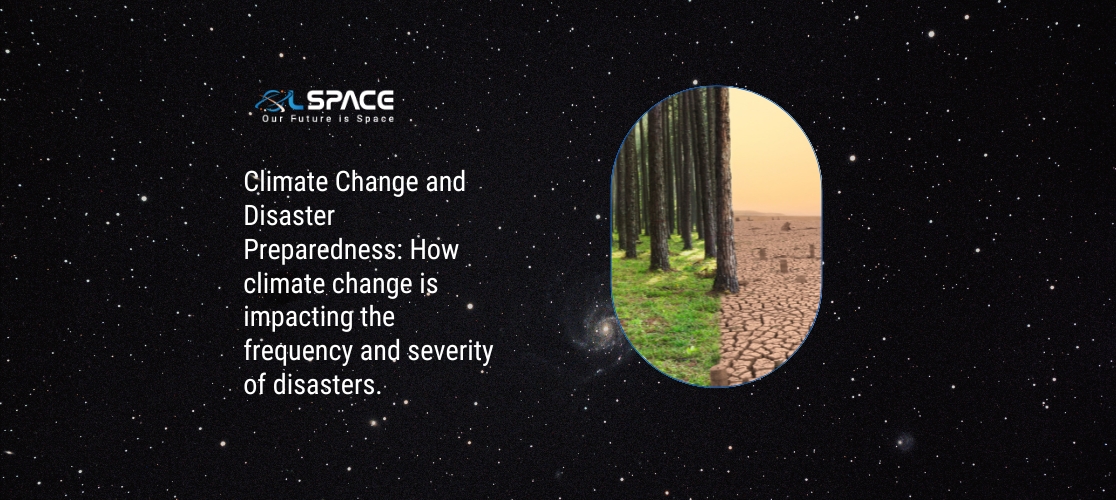05 September 2023
Climate Change and Disaster Preparedness: How climate change is impacting the frequency and severity of disasters.

Climate change is one of the most pressing challenges of our time, with far-reaching consequences for the environment, society, and the global economy. Among its many impacts, one of the most noticeable is the increasing frequency and severity of natural disasters. As our planet warms, understanding the link between climate change and disaster preparedness is critical for mitigating these risks and safeguarding communities.
Climate Change and Disasters: A Complex Relationship:
Intensified Weather Events: Climate change has led to more intense and unpredictable weather events. Rising global temperatures contribute to increased evaporation, leading to more severe storms, hurricanes, and heavy rainfall.
Heatwaves and Droughts: Climate change results in prolonged heatwaves and droughts in certain regions. These conditions increase the risk of wildfires and food and water shortages, further exacerbating disaster risks.
Sea-Level Rise: As temperatures rise, glaciers and polar ice caps melt, causing sea levels to rise. This sea-level rise intensifies storm surges and coastal flooding during hurricanes and typhoons.
Changing Precipitation Patterns: Climate change can alter precipitation patterns, leading to more prolonged dry periods followed by intense rainfall. This pattern can increase the risk of both droughts and flash floods.
Impact on Ecosystems: Climate change disrupts ecosystems and habitats, affecting the behavior and distribution of wildlife. This can lead to increased human-wildlife conflicts and disease transmission, adding to disaster risks.
The Consequences for Disaster Preparedness:
Increased Vulnerability: Climate change increases the vulnerability of communities and infrastructure to disasters. Low-lying coastal areas and regions prone to extreme heat are particularly at risk.
Resource Strain: Responding to more frequent and severe disasters strains the resources of disaster management agencies and can impede their ability to provide timely assistance.
Human Displacement: Rising sea levels, extreme weather events, and food and water scarcity can force people to migrate. This migration can lead to social and political instability and exacerbate disaster risks in new locations.
Economic Impact: The economic toll of climate-induced disasters is substantial. It includes damage to infrastructure, loss of agricultural productivity, and increased healthcare costs due to heat-related illnesses.
Disaster Preparedness in the Face of Climate Change:
Mitigation: Reducing greenhouse gas emissions is essential to slowing down the pace of climate change. Mitigation efforts include transitioning to renewable energy sources, improving energy efficiency, and reforestation.
Adaptation: Communities must adapt to the changing climate. This involves building resilient infrastructure, implementing early warning systems, and revising land-use planning to reduce vulnerability.
International Cooperation: Climate change and its consequences are global issues that require international cooperation. Nations must work together to share knowledge, technology, and resources for disaster preparedness and response.
Education and Awareness: Raising awareness about the link between climate change and disasters is crucial. It empowers individuals and communities to take action to reduce their vulnerability.
Conclusion: Climate change is undeniably linked to the increasing frequency and severity of disasters worldwide. As we face these challenges, disaster preparedness and mitigation strategies must evolve to address the new normal of our changing climate. This includes reducing greenhouse gas emissions, building resilient communities and infrastructure, and fostering international collaboration. Ultimately, our ability to adapt and mitigate the impacts of climate change will determine our resilience in the face of an uncertain future.
